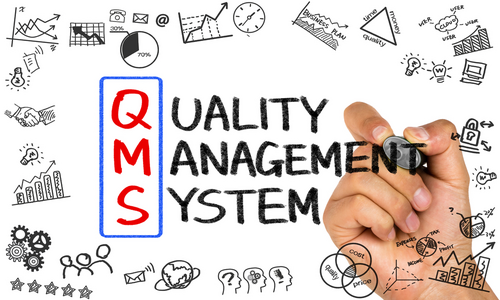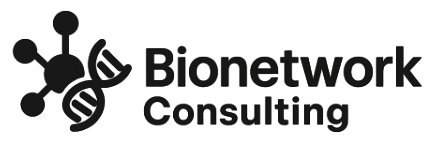
The life sciences industry—spanning pharmaceuticals, biotechnology, medical devices, and clinical research—is evolving faster than ever. Regulatory expectations are higher, technologies are more complex, and competition is global.
To stay ahead, organizations must embrace advanced data analytics, automate quality management processes, and choose their vendors more strategically than ever before.
In this article, we break down three critical domains:
- Biostatistics and Data Analytics
- Quality Management Systems (QMS)
- Vendor Selection and Qualification
Let’s explore how each is evolving and why they matter more than ever in 2025.
Biostatistics and Data Analytics: From Insight to Impact
What’s New in 2025?
In clinical research and healthcare, Biostatistics and Data Analytics has always played a central role in interpreting study results, understanding patterns, and making evidence-based decisions. But in 2025, it’s not just about statistical models—it’s about intelligent analytics, AI integration, and real-time decision-making.
Key Trends:
- AI-Powered Statistical Modeling: Tools like R, SAS Viya, and Python-based frameworks are now integrated with AI algorithms to provide predictive insights that go beyond traditional endpoints.
- Real-Time Clinical Data Monitoring: Wearables, remote patient monitoring (RPM), and electronic health records (EHRs) generate vast amounts of data. Real-time biostatistical analysis helps improve trial safety and efficiency.
- Data Lakes and Cloud Platforms: Organizations are storing massive datasets in platforms like AWS HealthLake or Google Cloud Healthcare API for cross-study analysis and faster data visualization.
Why It Matters:
The ability to interpret complex datasets in real time is no longer a bonus—it’s a necessity. Clinical trials, for instance, rely on fast insights to make protocol adjustments, identify safety signals early, and accelerate time-to-market.
How Teams Are Adapting:
- Upskilling statisticians in machine learning techniques.
- Implementing centralized monitoring dashboards for clinical trials.
- Investing in cloud-native analytics tools for scalable insights.
Quality Management System (QMS): Digital, Adaptive, and Intelligent
The Evolution of QMS in 2025
Gone are the days of paper-based quality systems. The modern Quality Management System is a digital, data-driven, and integrated platform that connects every part of the organization—from R&D to manufacturing and regulatory affairs.
Top QMS Trends in 2025:
- AI-Driven Risk Management: Systems can now identify patterns in deviations, complaints, or audit findings and proactively suggest CAPAs (Corrective and Preventive Actions).
- Cloud-Based QMS Platforms: Solutions like MasterControl, Veeva Vault QMS, and TrackWise Digital are enabling global teams to collaborate on compliance initiatives securely and in real time.
- Integration with IoT and MES: Quality systems are being integrated with manufacturing execution systems (MES) and IoT sensors to ensure batch quality and traceability.
- Audit-Ready at All Times: Thanks to automated document control, training records, and validation workflows, companies are maintaining continuous compliance and staying always audit-ready.
Why QMS Modernization Is Critical:
- Minimizes regulatory risk
- Reduces compliance costs
- Improves product safety and patient trust
Real-World Application:
For example, a medical device company using a modern QMS can automatically route non-conformance reports, trigger real-time CAPAs, and track resolution status—saving time and reducing the chance of FDA warning letters.
Vendor Selection and Qualification: A Strategic Imperative
Why Vendor Management Is Under the Spotlight in 2025
With outsourcing on the rise, Vendor selection and qualification have become critical success factors for life sciences companies. Whether it’s for raw materials, software, or clinical trial sites, choosing the right partner can make or break a project.
Top Vendor Management Trends:
- Digital Vendor Audits: Remote auditing tools, video walk-throughs, and document repositories are replacing traditional site visits.
- Risk-Based Vendor Categorization: Vendors are now segmented based on criticality, and the depth of qualification is adjusted accordingly.
- Blockchain for Supply Chain Transparency: Some companies are piloting blockchain to ensure traceability of critical supplies and to prevent counterfeiting.
- Integrated Supplier Portals: Platforms like SAP Ariba and Oracle SCM Cloud help companies manage onboarding, compliance documents, performance reviews, and issue tracking in one place.
Strategic Benefits:
- Streamlined vendor onboarding and qualification.
- Better performance tracking and scorecarding.
- Reduced supplier risk and enhanced quality assurance.
Best Practices:
- Implement a standardized vendor qualification checklist.
- Use automated workflows to manage approvals and documentation.
- Perform ongoing supplier audits and performance evaluations using real-time data.
How These Pillars Work Together
While biostatistics, QMS, and vendor qualification may seem like separate domains, in practice, they are deeply interconnected:
- A well-qualified vendor produces high-quality data that feeds into your analytics pipeline.
- Biostatistics teams rely on validated, traceable data maintained by your QMS.
- QMS ensures that vendor performance is regularly reviewed and documented, creating a feedback loop for continuous improvement.
Together, they form the foundation of operational excellence in regulated industries.
Looking Ahead: The Future Is Data-Driven, Agile, and Collaborative
As life sciences companies continue to evolve, the need for integrated, intelligent, and compliant systems will only grow. The future points to:
- Greater use of AI for predictive quality and analytics
- Tighter integration between systems (QMS, ERP, LIMS, CRM)
- Faster and more adaptive vendor onboarding processes
Success in this future isn’t about working harder—it’s about working smarter, using the right technologies and frameworks to enable teams to innovate without compromising compliance.
Final Thoughts: Building Resilience Through Smart Systems
The life sciences industry is at a crossroads where regulatory compliance, innovation, and operational efficiency must go hand in hand. Whether you’re running clinical trials, managing product quality, or sourcing new suppliers, the ability to harness data and implement smart systems is the key to success.
By investing in modern biostatistical tools, upgrading your Quality Management System, and streamlining vendor selection and qualification, you’re not just checking regulatory boxes—you’re setting your organization up for long-term growth and impact.
